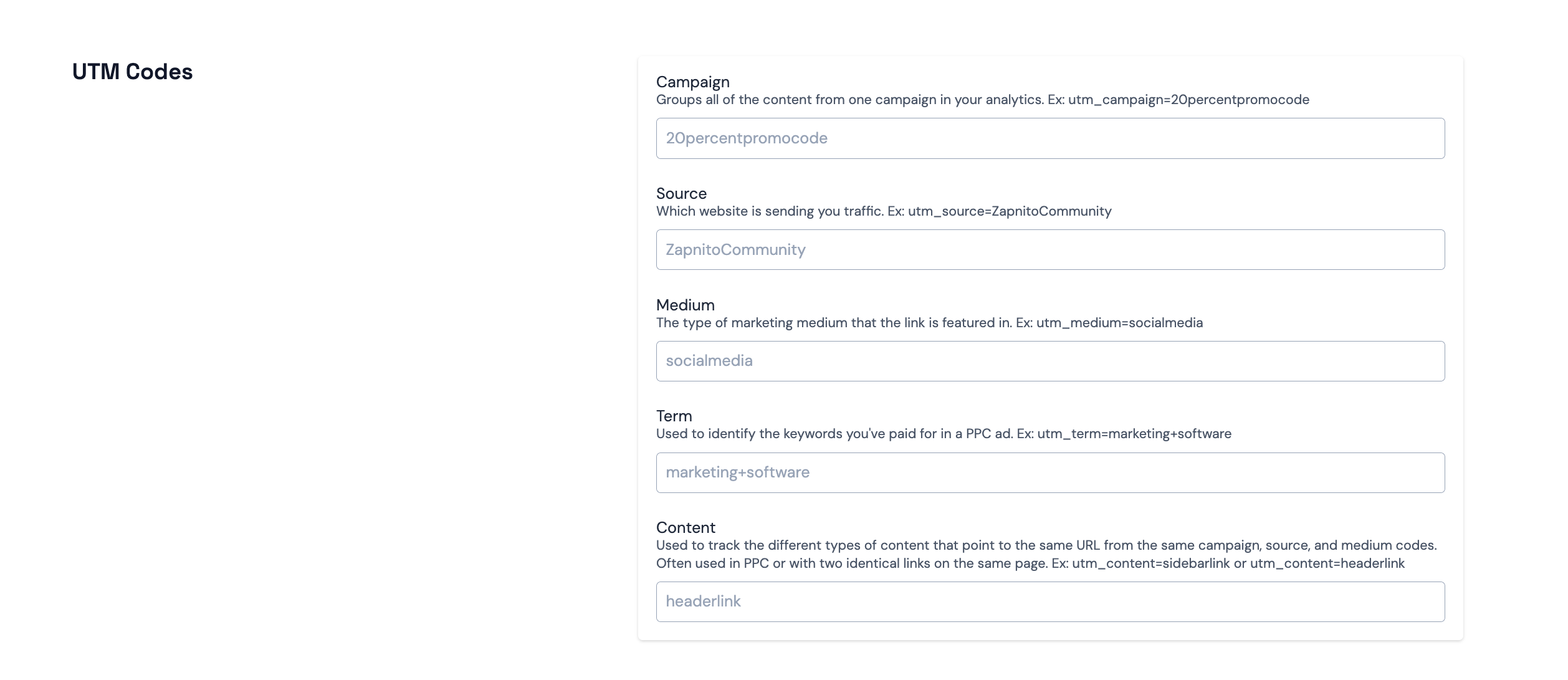
UTM (Urchin Tracking Module) codes are essential for answering the question, where did my user come from?
In a nutshell, UTM codes are snippets of code appended to your URLs that allow you to track performance and generate Google Analytics data for digital campaigns.
A UTM link may look like this:
http://yourwebsite.com/your-post-title/?utm_source=google
Let’s break this down further…
A UTM consists of several different components: campaign name, traffic source, campaign medium, keyword term and content. The first 3 are by far the most used parameters as they’re required (Name, Source, Medium), but for additional insights you may also choose to track all 5.
1. Campaign Name (required):
The campaign name parameter allows you to track the performance of a specific campaign, product, or offering that you’re driving traffic to. This is used to differentiate traffic between different Facebook Ad campaigns or email campaigns.
- Parameter added: utm_campaign
- Example: &utm_campaign=example-campaign
2. Traffic Source (required):
The source parameter allows you to track where the traffic originated from e.g Facebook, Google, LinkedIn, Twitter etc.
- Parameter added: utm_source
- Example: &utm_source=twitter
3. Campaign Medium (required):
This is the marketing medium that referred the traffic. It tracks the type of traffic such as a banner ad, an email, or a Facebook post.
- Parameter added: utmmedium
- Example: &utm_medium=banner
4. Keyword Term (optional):
Creating a campaign term allows you to track the paid keyword term of an ad or keyword of the link in a blog post. This parameter is specifically used for paid search ads.
- Parameter added: utm_term
- Example: &utm_term=growth+hacking+tactics
5. Content (optional):
Including this allows you to easily differentiate between ads on the same channel, which comes in handy when you’re A/B testing various images or ad copy (such as an email with two CTA buttons).
- Parameter added: utm_content
- Example: &utm_content=navlink
Putting this into practice - how to create a UTM Code on your Zapnito Community:
Head to Settings > Authoring Settings and the following page will be displayed.
Plug in the different parameters (remember the first 3 are required) and hit ‘Save’ to generate your link. We’ve included examples under each parameter in case you need a reminder!




To access please sign in or register for free
If you are a registered user on Zapnito Knowledge Hub, please sign in